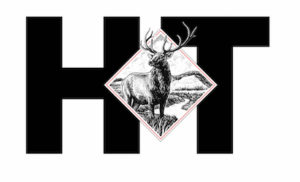RBC I In the midst of fighting a wildfire, predicting the future is a matter of tracking invisible forces: gust fronts, storms, air columns. While firefighters battle the flames on the ground, fire experts look for signs that the weather or the wildfire might shift. They follow storm tracks, watch weather models and study the fire’s path.
Their attempts at prediction begin even before the first plume of smoke rises. In regional centers around the West, forecasters determine the risk of wildfire and brief fire managers on where they should have teams ready to go.
For the Rocky Mountains, that task falls to Tim Mathewson, a 20-year veteran of weather forecasting.
“It’s a tough science,” Mathewson said. “There’s a lot of ingredients that help determine whether there’s a big fire today.”
For example, in 2012, much of the Rocky Mountain region was dry. Figuring out where a chance ignition might blow into a large-scale fire was tricky. At one point, teams were staged and ready to go in four of the five states Mathewson watches.
Once a fire starts, it gets even trickier. Mathewson has to tease out how the local geography will shape the weather patterns playing across his computer screens and how that particular fire will respond.
“You can take the most experienced forecaster in the field and I guarantee you they’ll learn something new,” he said. “Not all fires abide by the rules.”
Meteorologists like Mathewson have been producing forecasts for firefighting efforts at least since 1914, when the first official forecast was created, for Paducah, Kent. Two years later, a team of horses carried a forecaster into the field, along with the first mobile weather unit. Today, meteorologists rely on radar and satellite data, but that information can be hard to scale down to a single hill, canyon or mountain range. For example, Mathewson’s models for an individual fire may predict a weak wind from the southwest. But a canyon may funnel and redirect the flow of air so that firefighters are now grappling with moderate wind from the south.
That’s where Janice Coen comes in. Coen, a fire weather and behavior researcher at the National Center for Atmospheric Research in Boulder, Colo., has developed a model intended to predict weather and fire patterns on a more granular level. It could help forecasters predict how a particular fire will behave and inform fire prevention efforts like prescribed burns. Colorado’s Legislature is now considering funding more work on the model to put it into practical use.
While Mathewson developed his sense of fire behavior from long days watching fire from the ground, Coen’s came, at least in part, from time spent watching fire from the air. In the 1990s, she spent hours in airplanes, flying over fires with an infrared imager, watching how flames behave. Fires generally spread in a parachute-like pattern but some split into two flows or create fanciful shapes that look like fish. Flames sometimes move in unpredictable and dangerous fingers or fold back in on themselves to create whorls.
She began to recognize the more intricate shapes from experiments she and other researchers were conducting in the lab and from her knowledge of other weather phenomena. She could see how the heat from the fire was shaping the movement of air around it and how that would feed back into how the fire behaved.
Most models focus on either weather or fire. But Coen looked at how the two fed each other and how they were affected by terrain variations too small to be picked up by most weather models. That was the breakthrough.
“Once you capture the small flows, a lot of the weird stuff becomes obvious,” Coen said.
The model she developed combines an understanding of the physics of heat and air with fine-grained topographic and weather data to reproduce fire behavior in conditions closely mimicking the real world.
The model, called the Coupled Atmosphere-Wildland Fire Environment, captures the way a fire can actually influence the weather around it. Fires produce their own winds, which can rapidly and unpredictably expand fire growth.
For example, Durango, Colo.’s 2002 Missionary Ridge Fire burned 71,739 acres, thanks in part to winds generated by its own flames.
The turbulent atmosphere around fires can also produce microbursts, columns of falling air that can send helicopters and airplanes plummeting. Coen’s model may help predict whether pilots should be wary of downdrafts and inform managers’ decisions to use airborne fire suppression.
The model also can be run hours into the future to see how current conditions could develop. That could give fire managers a tool to help determine if it’s safe to light a prescribed burn or to decide where firefighting resources on a particular fire are needed most.
It’ll be a long time before Coen’s model can be used to make such decisions, though. Right now it’s suitable for research, not for the kinds of choices firefighters face on a daily or hourly basis. For that, Coen and fire experts will have to redesign the model with a whole new set of factors and determine which pieces are helpful and which are a distraction.
“You have to be careful of information overload,” she said.
That redesign, going from research tool to active forecasting mechanism, will be a lengthy and expensive process and so far, there’s no funding.
The Colorado Legislature is considering a proposal to fund the needed testing and design for Coen’s model along with another NCAR model for flood forecasting that would streamline data entry and speed up forecasting.
The bill has bipartisan backing and a price tag of $10 million over five years. So far, the proposal has received support from the Colorado State Fire Chiefs, which represents the state’s fire managers. The Colorado Division of Fire Prevention and Control has agreed to be the test site if the model is approved. The Legislature will decide whether to fund it this spring.
Coen’s research won’t overturn the tools forecasters and firefighters already use. Rather, it’s intended as a supplement, to help fill gaps in knowledge. But “a model’s a model,” said Mathewson, and in the end there’s no substitute for a forecaster’s judgment and instinct. That much won’t change.
Kate Schimel is an editorial intern at High Country News.





















